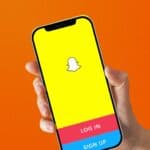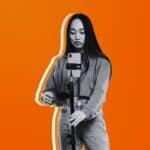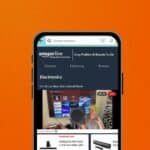Many marketers still think of influencer marketing as a brand awareness driver only. But as the channel has evolved, it’s increasingly become a powerful tool for driving action and results at every stage of the funnel, from awareness and consideration, to conversion and even advocacy.
It’s 2023. Influencer marketing is no longer a new idea. In fact, 1 in 4 marketers use it within their marketing strategy. So, how can your brand differentiate your campaigns from the competition? You need to think about the bigger picture.
Influencer marketing is no longer a tactical add-on, it needs to be a part of your brand’s central strategy, and marketers need to start thinking of it as such. In this article, we’re going to be discussing how full-funnel influencer marketing works, the ways you can adopt it and why it’s essential for driving long-term social success. But first, let’s take a step back.
Contents
What is full-funnel influencer marketing?
How to measure the overall success of full-funnel influencer marketing
Common mistakes brands make with influencer marketing
Influencer marketing at every stage of the marketing funnel
A shifting of mindset – single campaign to full funnel strategy
Full funnel Influencer marketing by The Goat Agency
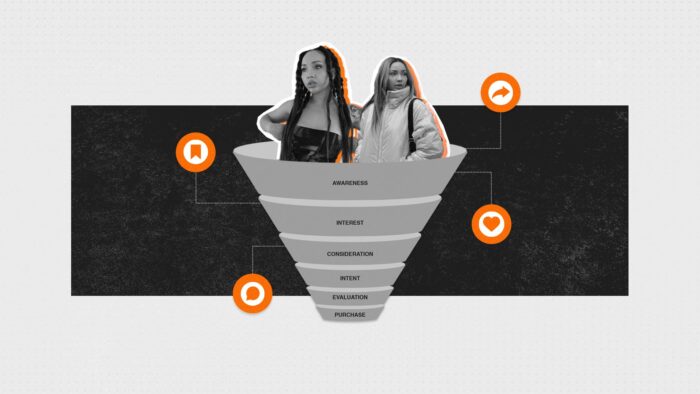
What is the marketing funnel?
The marketing funnel is a description of the customer journey structured with different stages. You’ll find some individuals refer to these stages by varying names.
You’re probably already aware of them, but in case you need a reminder, here’s how we refer to each stage.
- Awareness:
This is where potential customers become aware of your brand or product through marketing efforts. It’s when you show them exactly what your brand is about and come into view.
- Consideration:
At this stage, potential customers actively evaluate your offerings and compare them to alternatives. They are literally “considering” whether to buy
- Conversion:
The conversion stage is when potential customers make the decision and then take the action to buy
- Advocacy:
After the conversion, satisfied customers become loyal. With time, they then become advocates by promoting your brand through word-of-mouth, reviews, and referrals.
It’s the job of a marketer to guide people through these stages. Starting at the top of the funnel with awareness, taking them through the consideration phase, then into the conversion stage and leading them through to the advocacy stage. Of course, it’s important to note that this journey often isn’t linear and consumers can come into the funnel at different times.
If you’re a marketer, you’re probably well-versed in this routine. But when it comes to influencer marketing, often, this customer journey becomes unbalanced.
What is full-funnel influencer marketing?
Full-funnel influencer marketing is where you utilise social media creators at all stages of the marketing funnel. Sounds obvious right? But it can be tricky to understand where influencers can help with each part of this journey.
There are massive preconceptions about where influencers fit in these stages of consumer awareness. Brands need to develop a long-term strategy for their influencer campaigns. Because once you unlock the power of the whole customer journey with
influencers, you’ll see it come full circle (more on this later).
The benefits of full-funnel influencer marketing
When you connect influencer marketing with the full funnel, you see results. Why does this happen?
- Your brand earns consumer trust at every level
Influencers are experts at building trust with their audience. In fact, 61% of consumers trust influencer recommendations, compared to 38% who trust brand-produced content. Injecting this magic ingredient into campaigns across the whole funnel can mean consistently better results.
- You can reach hyper-targeted audiences at specific stages of awareness
Content creators can help you target very specific audiences. This means that you can utilise them to hone in on gaps in your outreach to build a full-funnel marketing strategy that drives results at every stage.
- Maximise ROI by measuring full-funnel results
By assessing your data on influencer-led campaigns at a certain level, you can use this to inform your marketing at all stages of the marketing funnel. For example, if you build a killer brand awareness campaign that drives results, you can assess the most engaged creators and work with them on a consideration phase campaign.
How to measure the overall success of full-funnel influencer marketing
By tracking key performance indicators like reach, engagement, conversion rates, and customer acquisition, you gain valuable insights into your influencer campaigns. With a data-driven approach, you can measure ROI, optimize strategies, and ensure that your influencer partnerships deliver tangible outcomes. Here are a few factors to consider:
Create a unified set of KPIs
Unlocking the true potential of full-funnel influencer marketing lies in connecting key performance indicators (KPIs) across channels and stages of the customer journey. KPIs for brand awareness need to connect with your KPI’s for consideration. For instance, if your reach is increasing through influencer-led campaigns, what effect, if any, is that having on your conversion rates or follower count?
Understanding how each level of your influencer marketing efforts is changing another will help you create a solid, core strategy and win on social.
Don’t get stuck in vanity metrics
Numbers can be deceiving. Influencer marketing does exactly what it says on the tin – influences people. This can sometimes make the results of successful campaigns tricky to measure. For example, if a consumer sees your ad for mascara and then heads to the store to buy it, it’s fairly impossible to know for certain how they came to this decision..
Equally, if your influencer campaign videos are getting a ton of views but little to no engagement, you may need to reassess your goals and creative strategy.
Data is king, but it’s not always completely reliable. Here at Goat, we luckily have a few (extremely smart) ways to get around this. But remember to think about your marketing results as a small part of the bigger picture (that bigger picture being a full-funnel influencer marketing strategy).
Common mistakes brands make with influencer marketing
Full funnel marketing isn’t being utilized nearly enough in the influencer marketing landscape. Although the majority of marketers already use influencers in their strategies, we still see a lot of mistakes happening:
- Focusing too much on top of funnel
Raising brand awareness is the most common goal among marketers for utilising influencer marketing. But Goat, we want to go viral (we hear you cry). Okay, you’ve tipped your views over the edge and got a ton of excitement around your new post. What now?
Brand awareness campaigns are great, but they’re not enough on their own. Marketers need to guide consumers past this stage and all the way down to the conversion.
- Focusing too much on bottom of funnel
Brands can become obsessed with conversions. We get it, the buying stage is arguably the most memorable one. You want your potential customers to finally sign that deal and press the “buy” button.
Putting all your efforts into this end of the funnel may seem like the right idea (especially when you’ve created high-converting creative content), but to get your customers actually taking action, they need to have experienced the rest of the marketing funnel.
- Partnering with the wrong influencers
Remember that trust factor we mentioned earlier? Brand-influencer partnerships need to be authentic. Whoever you work with needs to actually like your product or service and be the right fit. That also goes with what stage of the funnel you want them to create on. Mega-influencers might be a great partnership for the top of funnel, but they don’t get as much engagement as smaller influencers. Ensure you have the right partnerships for the whole of your strategy.
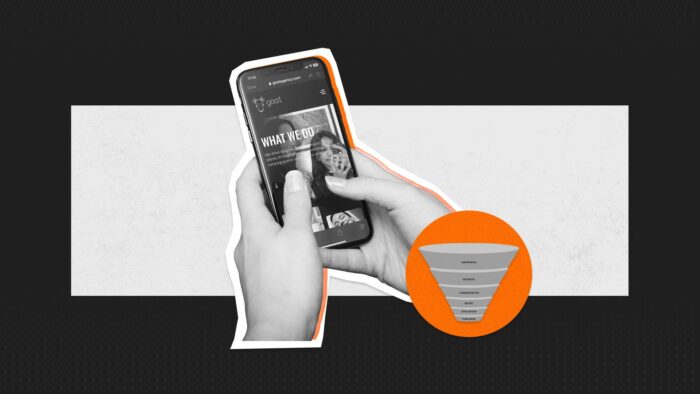
Influencer marketing at every stage of the marketing funnel
So how can you activate your full-funnel influencer marketing strategy and make it work? We’re taking you through each phase and what it means for creator-led campaigns.
Influencer marketing and brand awareness
Brand awareness is right at the beginning of your consumer’s journey. Any influencer marketing here needs far-reaching followers and visuals that pack a punch. Engagement is less of a key metric, as the goal is to get your brand in front of people and expand your reach.
Influencer marketing campaigns in the brand awareness funnel stage
When it comes to brand awareness there is a sentiment of “go big”. Although partnering with influencers who have higher reach is ideal, sometimes mid-tier and micro-influencers can have significant value here too. You may have a very specific audience demographic that you want to access and a micro influencer who shares that audience can be the perfect partnership. Sometimes brand awareness campaigns need to push the boundaries too. You may want to think outside the box when it comes to targeting and reach potential buyers in a completely different niche. For example, if you’re a gaming brand selling an esports game, the gamer community may already be aware of your product. Sports fans may not. So you may look at partnering with relevant sports influencers instead.
Where you place your brand awareness campaigns and who you target them to will affect the rest of your full-funnel influencer marketing strategy. So choose wisely and create unified KPIs (like we mentioned before).
Which influencers are ideal for brand awareness?
- Celebrities
- Mega-influencers
- Mid-tier influencers
- Micro-influencers (if you have a specific niche audience you’re targeting)
Which metrics should you look at when choosing an influencer partnership?
- Number of active creators
- Number of active posts
- Reach
- Follower growth
What content should you be focusing on?
- Try out videos
- Unboxing videos
- Branded hashtags
- Jumping on trends (to piggyback off residual growth)
What data should be collected to measure success?
- Impressions
- Follower growth
- Trackable links
Brand awareness influencer marketing example
For one of our biggest and most ambitious campaigns yet, we sought to drive brand awareness in ways that no agency or brand has ever done before.
For the relaunch of Deep Silver’s Saints Row we worked with some of the UK’s top YouTubers entertainers including GeorgeM (Memeulous), Josh & Archie, and Yiannimize. In the content, we had our creators jumping out of planes, recreating a Saints Row themed car IRL and even hacking the UK music charts (getting a top 30 hit btw).
The campaign drove 12 million impressions, 15,000 clicks, 9.2 million video views, over-performing our deliverables by 124%, and helping Saints Row attract more than a million players in the first three months.
By taking the elements of the game and bringing them to the real world, together with Deep Silver we were able to actively engage gaming audiences without directly submerging them in gaming content, instead focusing on “keeping it strange” – one of Saints Rows core themes – with influencers who strive to break the system.
Influencer marketing and brand consideration
The consideration phase is one of the most underrated stages of the marketing funnel. And yet it’s when consumers do the all-important decision-making. Don’t underestimate its power in a full-funnel influencer marketing strategy.
Influencer marketing campaigns in the brand consideration funnel stage
When consumers are considering buying your product, you need them to trust their decisions more than ever. That’s where engagement metrics can come in handy. Understanding where the conversation is around your niche is essential. Then getting involved with that conversation at the right time is the next step.
Influencers with less reach, but a committed, niche, highly engaged following can help you nail down this phase. They will build further trust with targeted consumers that have already been introduced to your brand and help them make that all important decision to convert. Remember to think about the consideration phase as the next step in your overall strategy and target your audiences wisely. Soon, you’ll be reaping the benefits.
Which influencers are ideal for brand consideration?
- Mid-tier influencers
- Micro-influencers (these creators have close-knit highly engaged followings making them the perfect candidate to offer trusted advice)
- Nano-influencers (similar to micro influencers they have a niche highly engaged following)
Which metrics should you look at when choosing an influencer partnership?
- Engagement rate (and quality of engagement).
- Likes-to-comments ratio
- Follower growth
What content should you be focusing on?
- Contests and giveaways.
- Educational content/how to’s
- Question and answer videos
- BTS content.
What campaign data should be collected to measure success?
- Amount of comments
- Engagement rate
- Trackable links
Brand consideration influencer marketing examples
The Dell XPS range is the tech brands most popular consumer product line, making it a critical part of their influencer marketing program.
We devised an influencer campaign to drive student consumers down the funnel. To do this, we needed to engage our audience with eye-catching content that would speak to Dell’s consumer’s passion points – Photography, fashion, lifestyle, and music.
Instead of opting for a product-driven campaign, we focused on learning more about our creators, what their passions were and what encouraged them to create. Instead of giving creators a script, we listened.
By showcasing the XPS range through multiple passion points, we enabled consumers to see how the product aligned with their personal hobbies and interests. Students considering a new laptop to fund their creative endeavours could witness the XPS range in all of its motions, allowing for authentic consideration without entering the product as the driving force behind the campaign.
Influencer marketing and conversions
This is, of course, where we intend consumers to land. Through your previous stages of marketing efforts with the help of influencers, this is where the decision matters most. Remember, it’s increasingly difficult to get consumers to buy. So taking your consumer through the full-funnel journey is increasingly important. Since 42.3% of brands view influencer marketing success based on conversions and sales, it’s easy to forget that the stages before this are crucial to seeing results here.
Influencer marketing campaigns in the conversion funnel stage
Anywhere between 2-5% CR is often considered successful, meaning that a good portion of viewers have clicked on your desired action. But this of course is not a one size fits all. Your conversion goals should vary depending on your campaign, products/services and what you are looking to achieve.
As we mentioned before, conversions are sometimes difficult to pin down as a metric. This is because social media campaigns can often influence decisions outside of our vision. In general, social media advertising fits into this stage the best, as it is the easiest way to create action driving campaigns. When you combine the power of influencer marketing with paid ads at this phase, you get serious results. We often use paid ads behind influencer owned channels, in addition to brand channels, as these channels often see a much higher conversion rate. Using a combination of both, and optimizing the creative, copy and other entailments, is key.
We should probably cover how conversions are actually measured. There are numerous ways to calculate a conversion including generated leads, clicks to a website, form submissions, click-through rate, engagements across social media and the variety of KPIs that you or a client agrees upon, like return on ad spend (ROAS) for example.
So conversions, for some, might look like a heightened interest in your product on social, with consumers commenting about a purchase they’ve made. For others, conversions may be defined by search volume, or an increase in sales online or in store. These are all examples of conversions, and the most important thing is to ensure these variables align with your influencer activity in order to draw intelligent conclusions
Which influencers are ideal for conversions?
- Paid advertising with Mid-tier influencers
- Paid advertising with Micro-influencers
- Paid advertising with nano-influencers
Which metrics should you look at when choosing an influencer partnership?
- CTR (click through rate) with other brands
- Engagement rate
- ROI for ad spend (on previous campaigns)
What content should you be focusing on?
- Paid ads
- Product reviews
- Offers and promotions
- How to’s
- Testimonials
What campaign data should be collected to measure success?
- Conversion rate
- CTR (click through rate)
- Trackable links
- ROI on ad spend
Conversion influencer marketing examples
Audi approached us with the goal of increasing brand awareness and product desirability. From a conversion perspective the brand also wanted to increase test drive numbers for their Q range SUVs.
We devised a brief in which influencers shared their individual passion-points, or aspects of their life, and aligned this with their Q range SUV of choice. Influencers were out snowboarding, giving insights into parenthood, and telling us about their entrepreneurship, which was all brought to life through content on Instagram.
We combined this organic content with a targeted paid social strategy, featuring a CTA driving consumers to Audi’s virtual assistant manager, where they could arrange a test drive.
This resulted in upwards of 39,000 clicks to sign up for a test drive, which helped in generating £13k+ additional content value.
Influencer marketing and brand advocacy
Often overlooked, the brand advocacy stage is where real magic can happen. The funnel supposedly ends in this stage, with now-converted customers becoming advocates for your brand. This is where word of mouth and recommendations come into play. With influencer marketing, however, the rewards are so much more.
Influencer marketing campaigns in the brand loyalty funnel stage
Advocacy can equal community in the social media world. Community marketing is powerful. So once your customers convert, you need to keep them engaged. Long term partnerships with influencers can help do that as well as consistent content on your own social media channels.
The beauty of brand advocacy on social media is that the funnel can often become a loop. Once a customer has bought your product, encouraging them to share it on socials can mean your conversion turns back into brand awareness or help people within the consideration phase. UGC (user-generated content) is an important aspect here. Video-first app formats like TikTok and Instagram reels are especially effective at promoting UGC, so activate long-term partnerships with influencers to keep customers engaged and wanting to find out more. Brands need to continue nurturing their converted customers with engaging content and influencer marketing to encourage ToFu results again.
Which influencers are ideal for brand advocacy?
- Mid-tier influencers
- Long term partnerships with influencers
- Micro-influencers
- Nano-influencers
- Consumers themselves
Which metrics should you look at when choosing an influencer partnership?
- Ongoing creation of UGC
- Engagement rate
- Comments
What content should you be focusing on?
- UGC
- Reviews/testimonials
- How to videos
- Conversational content
What campaign data should be collected to measure success?
- Amount of UGC
- Engagement rate
- Trackable links
Brand loyalty influencer marketing examples
Doritos’ Triangle Tryouts campaign is brand loyalty done right.
Ahead of this year’s Super Bowl, Doritos launched the #DoritosTriangleTryouts, a challenge for fans of the brand to submit triangle-inspired dances on TikTok. Utilising UGC is a great way to get the engagement ball rolling, but 16.6 billion views? Insane.
Doritos also made sure to activate some of TikTok’s top creators to enlist in the challenge themselves, encouraging their respective fanbases to join in on the fun.
Doritos’ exploits in the influencer space and across social media have been strong enough over the last decade that their audience is already won over. They don’t have to throw products in your face. Instead, Doritos engages their fans with challenges like this one, which encourages their global fanbase to participate and share their own content across social using branded hashtags.
A shifting of mindset – single campaign to full funnel strategy
Influencer marketing is no longer a silo. It needs to be tackled as a core marketing strategy throughout the full funnel. So where’s the best place to start thinking in the bigger picture? Here are our steps:
- Nail down your goals
As any great marketer (like you) will know, your goals are your starting point. But how you adapt them to fit a full-funnel strategy is key. Start with overarching goals then split them into individual KPIs for each stage of the funnel. It’s important to keep these unified (as mentioned earlier) as each phase will affect the others.
- Identify the right influencers
Brands need to know which influencers to use and when. This starts with a thorough influencer outreach strategy. Partnerships need to be authentic at every level and work within each stage of the funnel. A range of influencers with different follower counts and metrics will help you tackle the whole funnel successfully.
- Create the right content
Understanding what content to make and when is also key to a successful full-funnel strategy. Certain campaigns will work for specific stages and whichever influencer you collaborate with will have a direct impact on the kind of content you put out there.
- Measure and adapt
When you measure your results at each stage, you need to correlate those results to your other campaigns. Understanding the bigger picture means linking these measurements together and adapting your strategy accordingly.
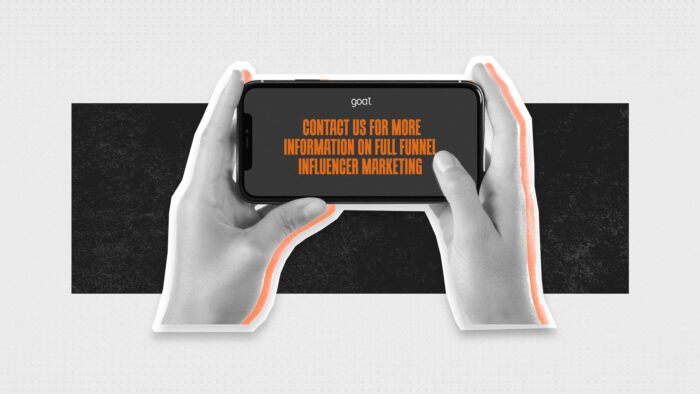
Full Funnel Influencer Marketing by The Goat Agency
With over eight years in the game, we’ve invested a lot of time in navigating full funnel influencer marketing. From awareness to brand loyalty – you name it, we’ve done it. Check out some of our industry-leading campaigns while you’re at it.
If you’re keen to learn more about full funnel influencer marketing, or even how to develop a content strategy at a particular stage of the funnel, we’ve got you covered. Don’t hesitate to get in touch with us.



